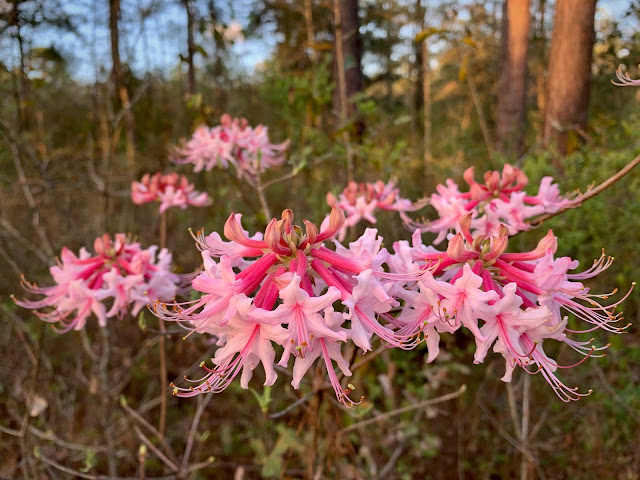Cold Hardy or Foolhardy?
 |
| Tillandsia fasciculata, or Cardinal Airplant, a native epiphyte |
Spring is traditionally a time when people begin to be serious about deciding for sure which plants will be going into their landscapes, so it's a good time to remind gardeners about the need to plan for cold hardy plants.
We had plenty of cold this winter, and the results were obvious in landscapes that had not been well-planned. In February I was trying to sell, for a relative, a house that had been planted with a row of areca palms to provide screening. The cold weather turned these palms completely brown. They weren't dead; but they might as well have been dead, because they looked terrible, and they were the first things you saw as you came up the driveway.
I noticed that many of the houses around this one had fallen into the same trap. The "landscaping" was done with exotic palms. The funny thing (to me, anyway) was that all these ugly brown things were surrounded by healthy green native plants.
 |
| A row of cold damaged areca palms |
These arecas are not dead, their growing tips were shielded from the worst weather, but it will be mid summer before they look green again. Once a frond has turned brown, it never changes. Only the new growth will be green. Remember, never cut partially green fronds, the palm needs the nutrients they hold.
Here is a not-very-nice entryway framed by burned exotics and bananas.
I was shooting surreptitiously from the side because it made me slightly nervous to be out there with the camera, but here is another house seen through a frame of burned fishtail palms, and one that had a row of specimen palms all along the front fence line. The palm, possibly a queen, near the house, fared better because of the micro-climate provided by the heat of the house itself.
At the same time those pictures were taken, here is what my yard of native plants looked like, and I live even further north in the county, and just as far west:
What was native and green? Slash pines, dahoon holly, cocoplum, white indigoberry, red stoppers, saw palmetto, myrsine, and coonties, in this photo. It just makes so much sense to plant natives and not loose money on plants that didn't evolve with our conditions, and not only won't be happy here, but also fail to contribute to the food chain for the birds, butterflies, pollinators and other creatures that depend on natives for food.
And I almost forgot - here's what I planted to replace the brown arecas and welcome potential buyers. What's here? My old favorite, marlberry, along with saw palmetto and Florida boxwood, of which you need male and female for berries. And guess what. The house is sold! Of course I left lots of native plant information and an FNPS membership application on the kitchen counter!
 |
| marlberry and saw palmetto |
 |
| boxwoods in foreground |
So as you choose plants this spring, be sure to research the ones that are well-suited for your own particular conditions. You wouldn't plant sea oats in a swamp, right? There are so many resources right at hand these days. We have listed them frequently here, but here is a list for you, just a few of the many available:
All of these will tell you and/or show you with maps, which plants grow naturally in your area.
While I was looking for some cold hardy plant lists, I came across this article by Laura Schiller which you might find useful: Laura Schiller: http://www.floridanativeplants.com/article_cold-hardy_plants.html
Laura has also written a great little book (for sale on side bar) Natural Florida Landscaping, and owns a nursery on the west coast - they have an online store and a newsletter you can sign up for if you want to. Here's her new website: http://www.floridanativeplants.com
Well as usual, I'm the only up around here, so time to turn off the lights! Good luck with your spring plants, and remember
Native Plants Add Life to Your Landscape!
sue dingwell







Comments
V. Avery
http://fnpsblog.blogspot.com/2010_08_01_archive.html